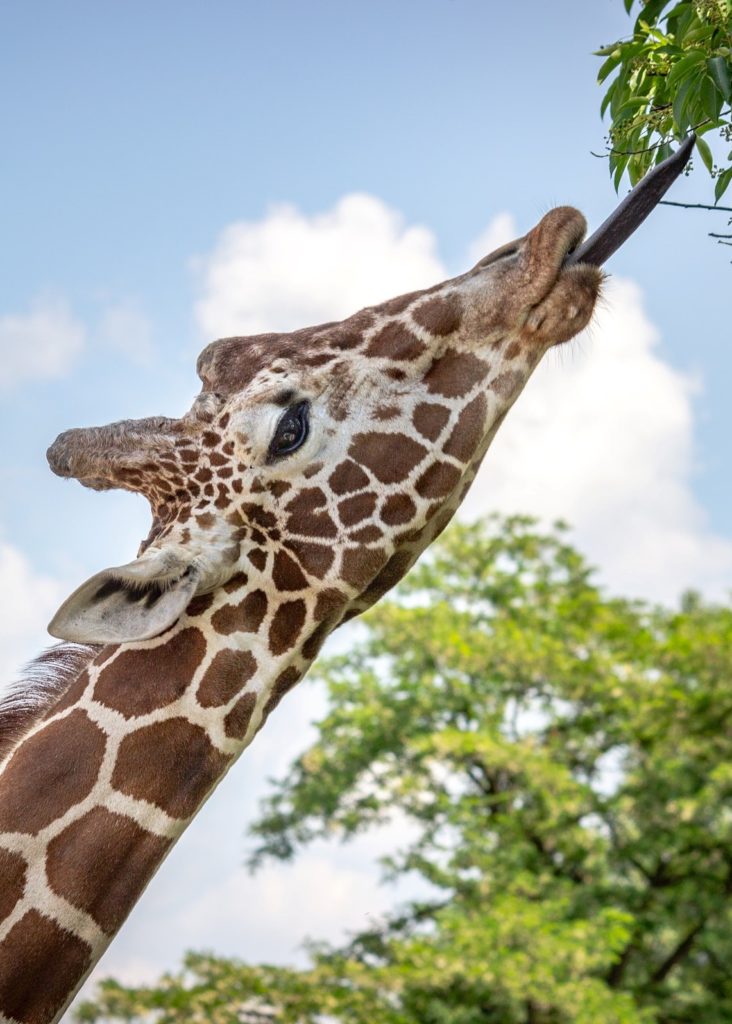African Megafauna
You may be asking yourself, “what is a megafauna?” The easiest answer is that it’s a big (mega) animal (fauna). Some scientists can be particular as to what counts as a “true” megafauna but most agree that if it’s big, then it’s a megafauna. Long ago, megafauna ruled the world. There were mammoths in North America, and elephant birds on Madagascar. Giant goanna lizards five meters (16 feet) long roamed Australia. Most of these giants died out millions of years ago, but a lot of African megafauna held on.
Extinct Megafauna
Many of the megafauna extinctions from around the world are attributed to humans. Large herbivores like mammoths were overhunted for food, while their predators that relied on those herbivores like sabertooth cats died. In Africa, the major megafauna collapse had a much different story. As a report by Faith, J. and Rowan, J. et al points out, many megafauna saw a harsh decline about 4.6 mya which was over 1 million years before early human hominids were reliant on meat. Instead, it was likely climate change that caused this large megafauna collapse in Africa. As the climate changed the grasslands that now cover much of the continent of Africa began to emerge and forests receded along with the animals that relied on them. A few highlighted megafauna have been chosen below, but many ancient rhinos, hippos, and even a species of camel all met their end as the climate changed around them.
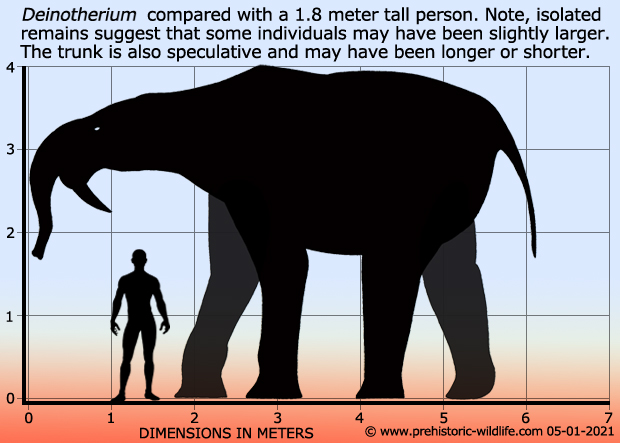
Deinotherium was genus of animals that were a precursor to modern elephants as well as mammoths in North America. In Africa they existed about 9.5 million years ago but other species were still alive as recently as 3.5 million years ago. They stood slightly taller than modern African elephants and had much smaller ears. Their tusks curved downwards rather than upwards and scientists aren’t really sure why or what exactly they were used for. Deinotherium in Africa largely died off as the climate changed.
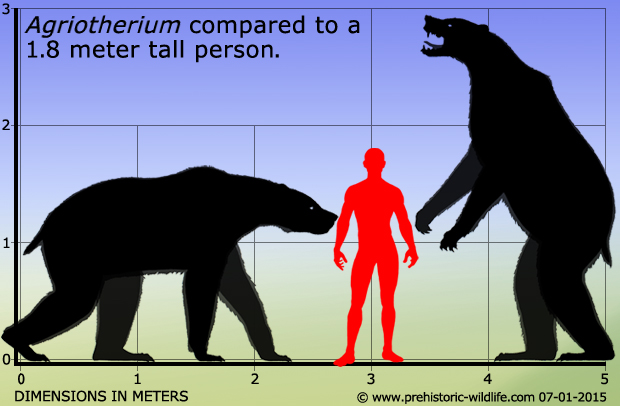
Bears once roamed Africa. And not just any bear either but rather Agrotherium africanum which was one of the largest land carnivores to ever exist. They once roamed South Africa and are thought to perhaps not be the savage killers they appear to be at first glance. Their small snout and relatively small jaw muscles suggest this giant ate many fruits in nuts in addition to smaller prey items. Modern bears will also eat non-meat prey depending on the season and what food is available.
The Atlas bear also once roamed Africa in the Atlas mountains. Their decline can be directly linked to the Roman empire who hunted them for sport and used them in gladiator rings. Their exact range is unknown, and likely shrunk as time went on.
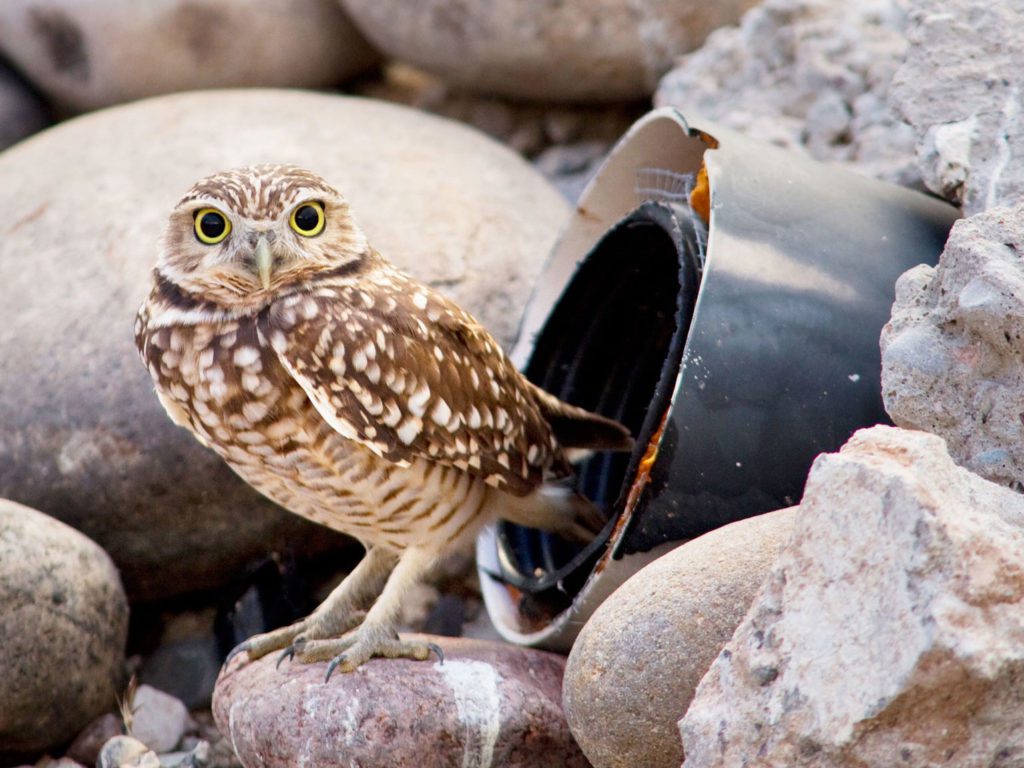
Ground nesting birds often take advantage of prairie dog colonies as a nesting site. Not only do the birds get a short-grass area that is perfect for their nest, they also get extra pairs of eyes to look for danger as well as an increased abundance of insects for food that are attracted to the colony and the plants there. Burrowing Owls are one famous examples, with the owls often using the prairie dog burrows themselves. With a decline in suitable habitat many owl populations are being given artificial nests to use (as pictured above). Other birds that commonly use prairie dogs colonies as nest sites include: Mountain Plovers, Horned Larks, and Killdeer.
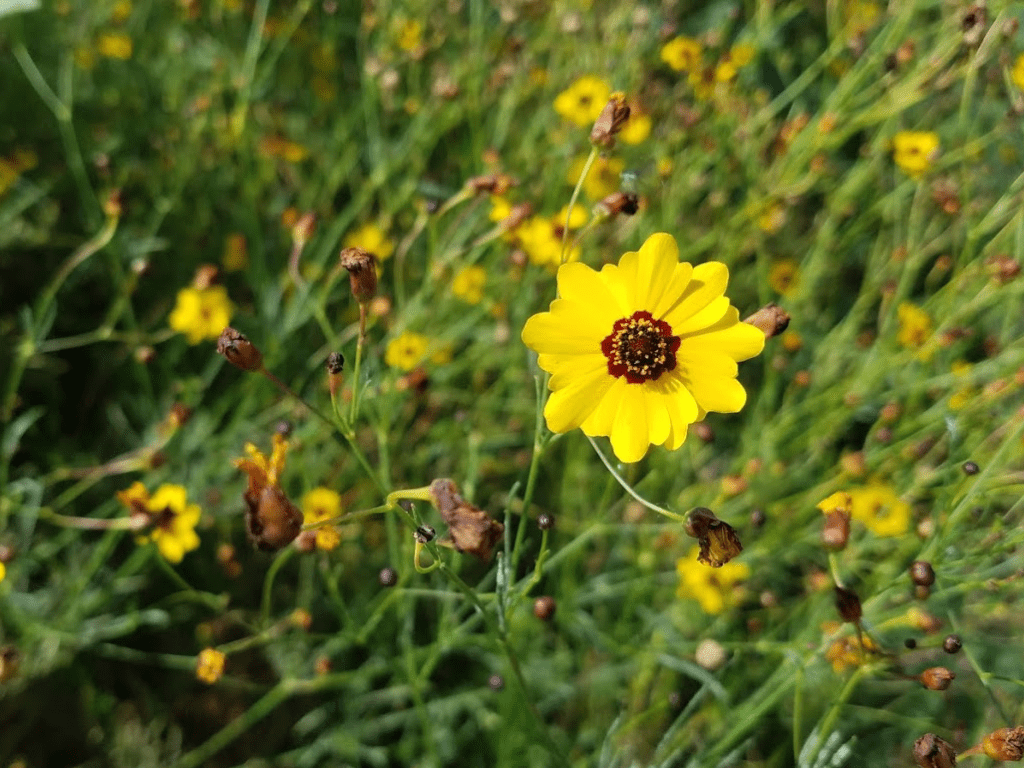
The base of the food web: plants. Prairie dogs have been shown to have a strong connection to not only the diversity of plants that are present, but the plants on colonies tend to be native ones that are adapted to the disturbances like digging and grazing that prairies historically have undergone. You’ll find a wide range of native grasses and wildflowers and a distinct lack of small trees and shrubs which are actively chewed back by the little rodents. With more plants comes more insects, which attracts more birds to eat the bugs, and then more predators like foxes and coyotes. If you ever want to increase the wildlife around your home, planting a garden full of native plants is the way to go!
The Quagga
The quagga went extinct in 1883 after the very last mare died at the Amsterdam Zoo. Mounts exist of this extinct zebra, and one taxidermist was able to actually collect a tissue sample from a mount that was being touched up. After running a genetic analysis on the sample it was found that the quagga was actually a subspecies of the common plains zebra which is still alive today.
The plains zebra can have a wide variety of patterns to it’s stripes to the point where they can be mostly black or even spotted. After it was found out that the quagga might be able to be recreated through selectively breeding for less stripes and a brown rump, The Quagga Project set out to do just that. This man-made quagga has been released into a couple different places in Africa but are not allowed to interbreed with other plains zebra. This wild but separate approach means is good in that new genetics won’t be mixed back into wild populations.
The Quagga Project has been partially successful in recreating a zebra that looks a lot like the extinct quagga. It is important to note however, that it would be nearly impossible to truly recreate this unique subspecies.
The name quagga is an onomatopoeia for the noise that zebras make with the double “g” making a harsh “h” noise (see video above).
Modern Megafauna
But what about the megafauna that exist today in Africa? How have they survived, while so few other large land animals exist today? One reason for their success is that many African animals are very specially adapted to the grasslands they now call home. They were able to survive the changing climate that their ancient megafauna ancestors could not, and began to flourish. Another theory is that perhaps as humankind evolved and began to spread across Africa these megafauna developed a healthy fear of humankind which kept them from the same overhunting fate as many other megafauna. Odds are it’s a little of both, and perhaps some other factors yet to be discovered. Either way, the megafauna that call Africa home are one of a kind and truly awe-inspiring.
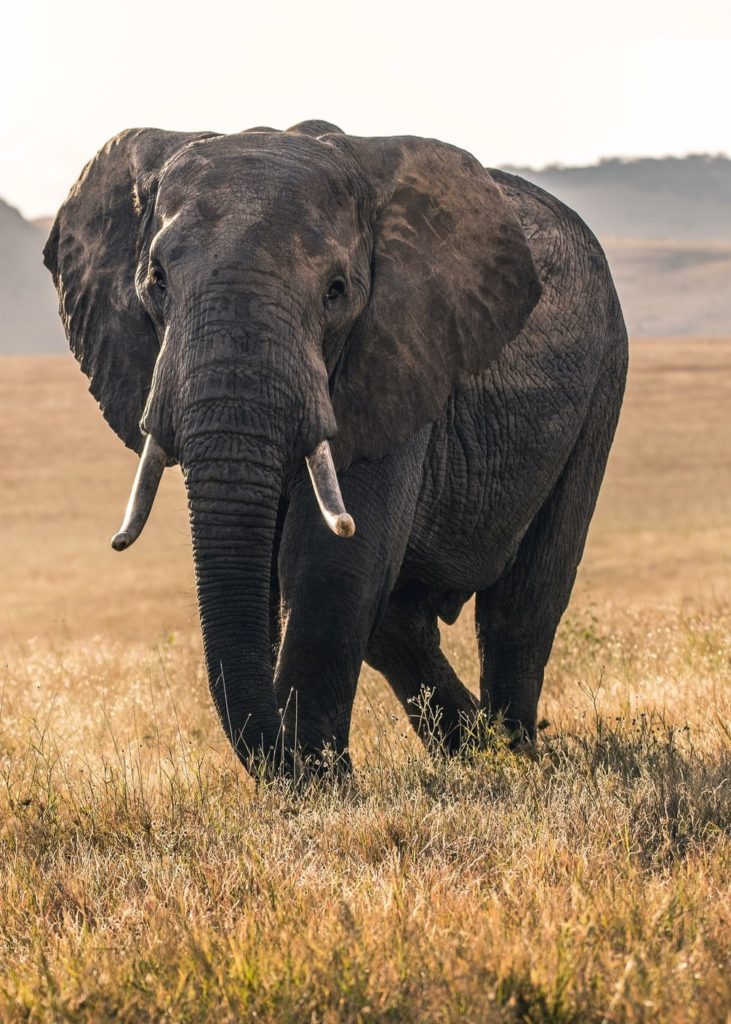
Giant of Giants
Weighing in at up to 6100 kg (~13,400 lbs) the African elephant is the largest land animal on Earth (still living anyways). Their long tusks are actually modified upper incisors (the teeth in the front of the mouth) and can grow to be 350 cm (over 11 feet) long but are usually much shorter. They use these large tusks to spar with each other, defend themselves, and even dig around for food or turn over logs.
These giants are immensely powerful and when coming in contact with humans can cause trouble. Not much stops an elephant from getting what they want, and they are notorious for raiding farms at night. The nonprofit Elephants & Bees found one genius way around this issue – a living fence of beehives. The Elephants dislike the bees, and the bees provide honey and pollination services for the farmer so it’s a win-win!
Eagle-eyed View
From heaviest to tallest, Africa has it all. These long-necked herbivores are perfectly adapted to reaching food unavailable to other herbivores. They can grow to be nearly six meters (18 feet) tall with 45 cm (~18 inch) tongue to boot. That tongue is black in color as protection against the sun above the grasslands they inhabit. Despite their extremely long neck, they actually only have seven vertebrae in the neck, just like humans!
According to the IUCN, there is a single species of giraffe (Giraffa camelopardalis) with nine subspecies. Recent research however suggests that there may be as many as four distinct species with a few subspecies mixed in. Most populations of giraffes are remaining at a steady number, though certain subspecies such as the Nubian giraffe are critically endangered with only 2% of their population remaining. The largest threats for giraffes are habitat loss and (for some populations) poaching.
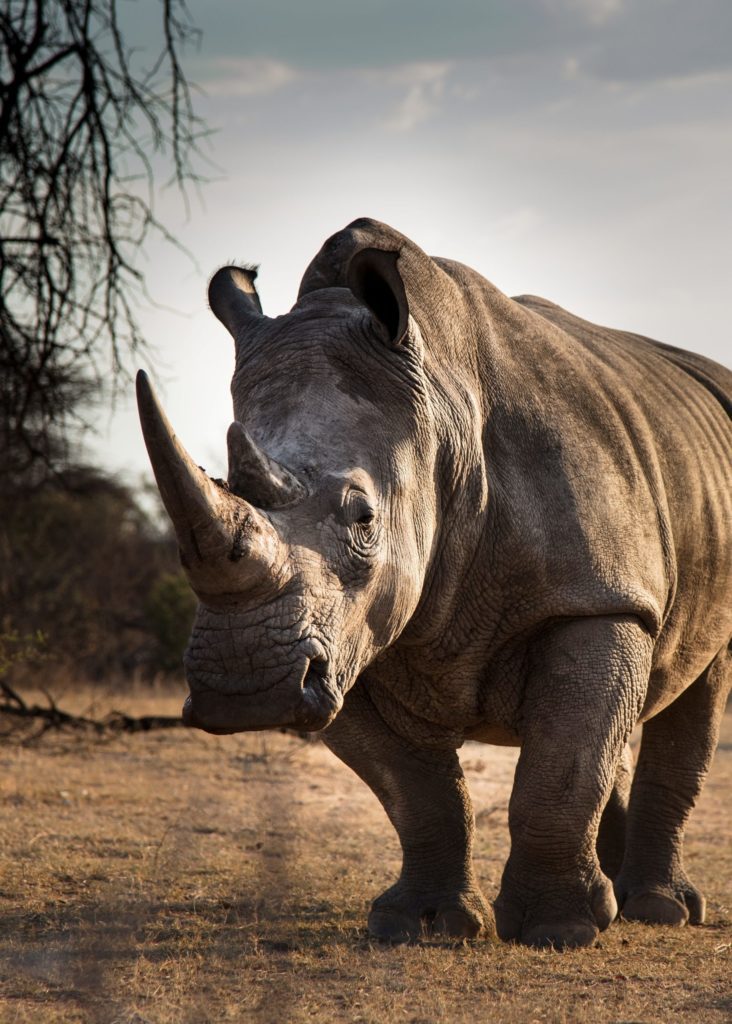
Tough-skinned
Rhinos are the second heaviest land animal. What little they lack in size they make up for in attitude. When agitated, these tank-like animals can run at speeds over 48 kph (30 mph) and are a force to be reckoned with. Their two inch thick skin makes great armor against predators or other rhinos when fighting for a mate.
Rhinoceros are broken into two groups: the white rhinos and the black rhinos. These names are misleading however, as all species of rhinos are some sort of grey color. The easiest way to tell what group a rhino belong in is the shape of their lip – black rhinos have pointed lips, and white rhinos, square. This is due to the different types of food they eat with black rhinos being browsers selectively picking off leaves, and white rhinos being grazers of grass.
Of all of Africa’s living megafauna, the rhino might have it the hardest. These animals historically were much sought after by trophy hunters and poachers alike. In 2011 the western black rhino was declared extinct by the IUCN. The northern white rhino is functionally extinct, with the only two remaining individuals both being female. Habitat loss plays a role in the loss of rhinos, though poaching perhaps a larger one. The hides and horns of rhinos is very valuable, leading to around the clock guards watching over certain populations of rhinos to try to keep them safe.
How can you help?
As always, arming yourself with knowledge is the first step, go you! Now you can share the plight of megafauna with a friend or even an enemy. You could also donate your time to help identify field camera shots, donate your money to reputable charities, or even shop at websites that donate for you. If you travel to Africa to see some of these charismatic megafauna do some research before you go to make sure the guide you’re with will respect the animal’s space and maybe even donate proceeds to conservation. Ecotourism is a double-edged sword. When done right, it can bring joy and awareness to ecosystems in trouble. When done poorly however tours could disrupt animal’s lives, destroy habitat, and cause unrepairable harm to the people, animals, and plants that live there.
Megafauna Conservation Picks:
Sources/Further Reading:
- Faith, J. T., Rowan, J., Du, A., & Koch, P. L. (2018). Plio-Pleistocene decline of African megaherbivores: No evidence for ancient hominin impacts. Science, 362(6417), 938-941. doi:10.1126/science.aau2728
- The Quagga Project. 2021.
- Animal Diversity Web. University of Michigan Museum of Zoology. https://animaldiversity.org/
- Prehistoric Wildlife. http://www.prehistoric-wildlife.com/
Did you spot an error or have questions about this blog post? Did we miss a cool megafauna species? Email Nicole Brown at: nicole@grasslandgroupies.org

